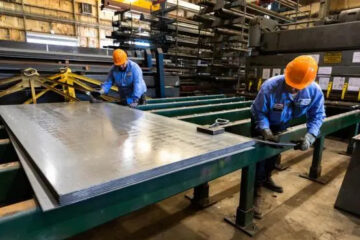Halogen-free flame retardant additives are mainly based on phosphorus and nitrogen-based materials, which form a carbon layer and reduce the release of toxic fumes. Melamine and its derivatives are the most important organic nitrogen compounds used as flame retardant additives, such as melamine, melamine oxalate, melamine borate, melamine phosphate, melamine phthalate, and melamine cyanurate. Here, Alfa Chemistry summarizes some popular research information on the flame retardant mechanism, application and effect of melamine and its derivatives in various common composite materials, such as polyurethane foam (PUF), polyamide (PA), polyvinyl alcohol (PVA) and epoxy resin (EP).
Melamine Flame Retardant for Polyurethane Foam
M. Thirumal et al. reported the effect of melamine polyphosphate (MPP) and melamine cyanurate (MCA) on the flame retardant properties (thermo-oxidative stability, flame retardancy and smoke density properties) of water blown rigid PUF. The results show that the insulation properties of MPP- and MC-filled PUF are improved, and MPP-filled PUF has better flame retardant properties. [1]
For flexible polyurethane foam (FPUF), highly efficient flame-retardant melamine salt (DPPMA) synthesized from melamine (MA) and diphenylphosphinic acid (DPPA) showed improved flame-retardant properties. The FPUF with only 5 php DPPMA added passed the vertical burning test with a 22% increase in LOI value. In this flame retardant system, DPPMA releases NH3 and H2O to dilute combustible gases and phosphorus-containing free radicals during the combustion process, consuming the active free radicals generated by FPUF. [2]
Melamine Flame Retardant for Polyamide
As early as 2009, Y. Liu et al. explored the flame retardant effect and mechanism of melamine cyanurate (MCA) flame retardant on polyamide 6 (PA6). It was found that MCA flame retardant PA6 mainly undergoes weak bond breakage and degradation to form oligomers. The generated oligomers can accelerate the formation of molten droplets, effectively remove combustion heat and potential fuel, and at the same time form a stable cross-linked structure, thereby greatly strengthening the carbon layer. [3] In order to further improve the flame retardant properties of PA6/MCA composites, the nitrogen-containing bases were used to customize the hydrogen bonding network of MCA. The results show that PA6 samples containing 9 wt% cytosine-MCA can achieve the UL-94 V-0 grade with an LOI value of 30.7%.
Melamine Flame Retardant for Polyvinyl Alcohol
A new flame retardant system containing melamine polyphosphate (MPP) and graphene has been developed for the flame retardant modification of polyvinyl alcohol (PVA). In this flame retardant system, MPP acts as a dehydration catalyst and foaming agent, and graphene acts as a synergist. They significantly improve the thermal stability of PVA composites and significantly reduce flammability. MPP/graphene/PVA composite (PVA/G1/MPP10) achieves an LOI value of 29.6 and a UL-94 V0 grade. [5]
Melamine Flame Retardant for Epoxy Resin
Melamine poly(metal phosphates) (MPMeP) are a suitable flame retardant for epoxy resins (EP), depending on its type and synergists. Studies have compared the flame retardant effects of melamine polyaluminum phosphate (MPAlP), melamine polyzinc polyphosphate (MPZnP) and melamine magnesium polyphosphate (MPMgP) in epoxy resin. These MPMePs showed similarities in terms of pyrolysis, but EP+MPZnP and EP+MPMgP showed better fire resistance than EP+MPAlP due to their superior protective properties against fire residues. In addition, MPZnP and melamine polyphosphate (MPP) also show obvious synergistic effects in EP.



0 Comments